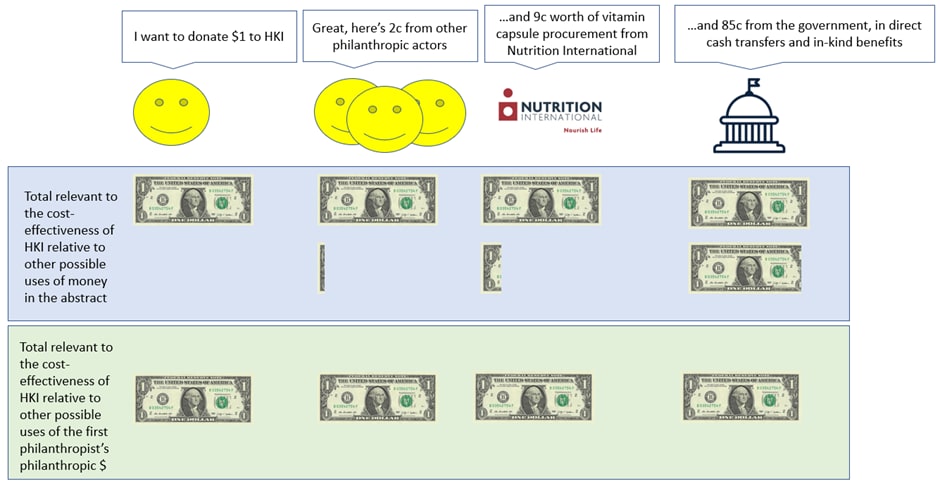I often focus on trying to improve my ability to estimate how much it would cost to avert a DALY or to save the life of a kid under 5 years old by donating to a particular charity. I am especially trying to find an upper limit to these amounts, so that I can very honestly, and with a lot of authority, tell a potential donor that if they donate to a particular charity, they will avert at least one DALY or save at least 1 child's life for the given cost. I want to find such an upper limit so that there can be somewhere around at least a 95% chance that it is correct.
I think a lot of people that might be interested in donating to highly cost-effective charities don't end up doing that, because they just don't trust those charities and the estimates for how cost-effective they are. And, I think trying to find better upper limit values for this kind of thing could help improve the argument for giving money to these kinds of highly cost-effective charities.
As part of this, I recently started trying to figure out how to factor in the costs from various effective altruism or global health organizations that aren't directly doing charity work or even directly giving money to the charities that are directly doing the work, but that do work that facilitates the work that those charities do. For example, the WHO seems to do a lot of work that makes it possible for lots of charities to do their work, so it seems likely that I should try to account for those costs for the WHO.
So far, the best method I have come up with for estimating these kinds of costs is to:
- Add up the money spent on overhead activities like this.
- Compare it to the total impacted charity money that is flowing through the charities and organizations that are being helped by those overhead activities.
- Figure out a good estimate of an upper limit on how much good all the impacted charity money together does in dollars per DALY.
- Multiply the dollars per DALY by the amount spent by the organization and divide by the amount flowing through the applicable charities being helped. This should give you a final number of dollars per DALY of overhead cost from these types of organizations (like the WHO).
For example, doing this calculation for the WHO:
- Start with the budget of the WHO for both sub-Saharan Africa ($496 million) and the HQ ($597 million) added together ($1,093 million).
- Find the total impacted money flowing through the impacted organizations. I'm estimating this to be $114 billion because that is about how much the world spends on health interventions in sub-Saharan Africa.
- Figure out an upper limit of cost per DALY for health interventions in sub-Saharan Africa. It seems like $150/DALY is a good estimate for this.
- Multiply dollars per DALY ($150/DALY) by amount spent by WHO ($1,093 million) and divide by amount flowing through impacted organizations ($114 billion). That comes out to $1.44 per DALY that is overhead costs from the WHO.
Thus far I'm thinking it might be good to account for these kinds of costs from the following organizations: WHO, GiveWell, Rethink Priorities, Giving What We Can, The Life You Can Save, The Centre for Effective Altruism, 80,000 Hours
So I'm wondering:
- Does anyone have any ideas on how I could improve this calculation?
- Or which organizations I should include?
- Or other kinds of costs that I should try to account for?
And also:
- Does anyone have any arguments for why this calculation is unnecessary?
- And why it is only necessary to include the costs of the charity itself?
- Or how estimates from organizations like GiveWell are already accounting for these types of costs somehow?
- Or any other feedback?


I've only spoken to a few donors, mostly friends and family. They seemed to especially like the idea of donating to charities that are local to their communities, which most highly cost-effective charities don't, because they are mostly in low income places, not the USA. They were also concerned with what portion of the donated money would be spent on the charity's own overhead or administration. And they especially didn't want to receive spam mail or email from charities as a result of donating.
I suppose my assumption is that I should start with an argument I think would work on myself, if I hadn't studied global health as much as I have, and then try to figure out what part of that people are resistant to. If I hadn't studied global health, and wanted to be able to donate effectively without having to study it, I would have been looking for that upper limit with a likelihood of somewhere around 95% that the cost would be below it, even if the upper limit needed to be pretty high in order to reach that level of certainty. So now I'm trying to figure out such an upper limit myself.